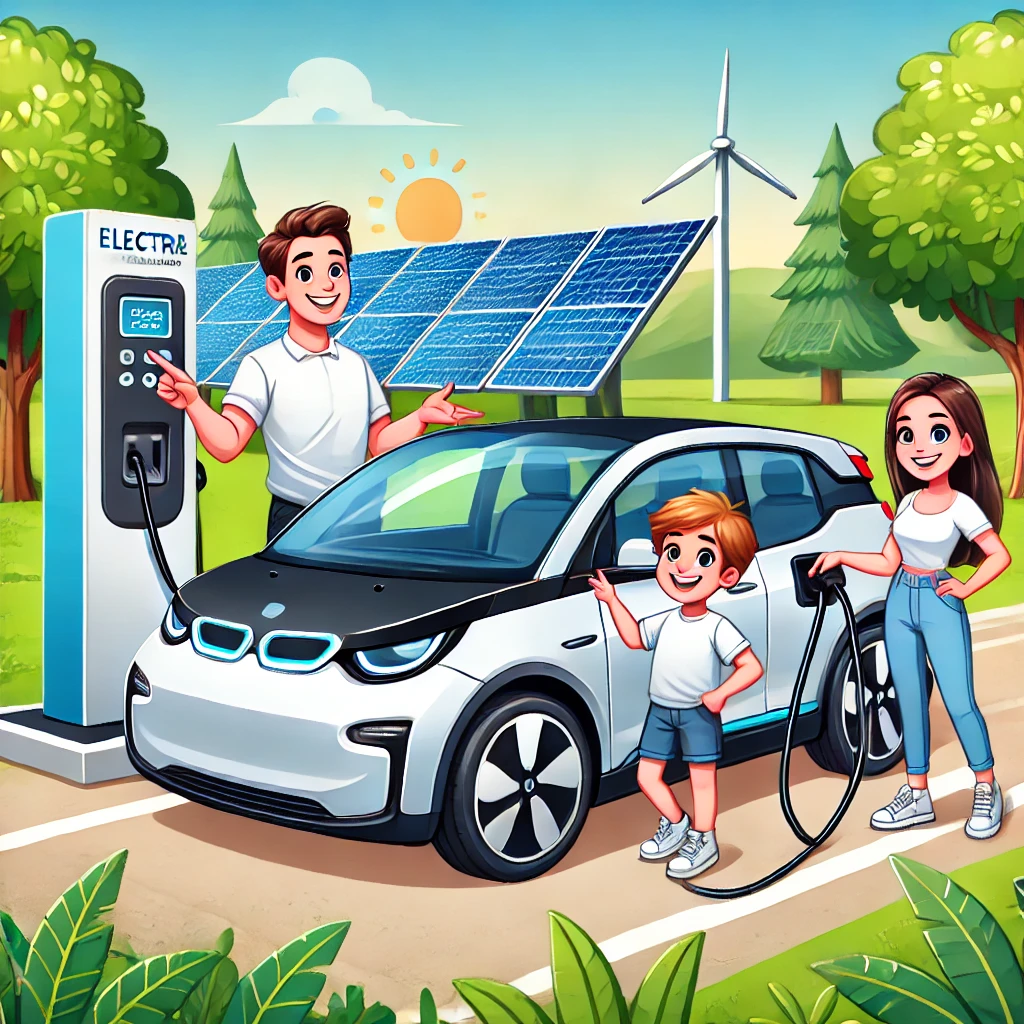In recent years, interest in ‘electric cars’ has increased dramatically because they provide an environmentally friendly and economical replacement for gas-powered vehicles. Unfortunately, in today’s modern world with so many choices, it can be difficult to find the most suitable ‘electric vehicle’. This guide is designed to assist you every step of the way in choosing the right ‘electric vehicle’ for you.
Table of Contents

1. Your Day to Day Activities
It may not even sit with many, but the first and the most important thing you should take into consideration is your driving habits and day to day life.
Distance Inevitably Matters: Analyze how far you would be traveling on a daily basis. Are extreme distances unavoidable? Do you need to replace your car with a long or short range EV?
Road Trips: Do you constantly travel for holidays? If yes, we would recommend buying an EV that has high battery range and access to fast charging stations.
Hilly Areas: If you reside in hilly areas, it is best to go with an EV that has a high torque and regenerative braking.
If only these factors are taken into consideration, you will have a lot less obstacles to worry about in the personal transition to an electric vehicle.
2. Battery Range
First of all, considerments when purchasing an ‘electric vehicle’ include its battery range. The distance which an EV vehicle will travel on a single charge is referred to as the battery range.
Short Range (100-150 miles): Most appropriate for the drivers in the cities.
Mid-Range (150-250 miles): Best suited for drivers who stays in suburb areas, and goes on a long drive occasionally.
Long Range (250+ miles): Perfect for people who travel often and for those who live in the country area.
It is also important to check whether these figures correlate with real world driving, as factors like weather, speed and terrain may affect the real mileage.
3. Charging Options
The structuring of charging is also one of the most significant factors which takes part in the selection of an ‘electric vehicle. Averagely, consider the following:
Home Charging: A few EV owners relies solely on home chargers. Try to ensure that your house is equipped appropriately, or at least that you have a Level 2 charger so that you can charge it faster overnight.
Public Charging: It is time to assess how many other charging public locations are near your house, work place or regular places you drive to.
Fast Charging: Choose an EV with DC fast charging ability if you are traveling long distances and want to get extra fast charges.
Services such as Plug Share and Charge Point come in handy for finding chargers and scheduling stops in between journeys.
4. Think About the Vehicle’s Size and Its Type
The following types of electric vehicles span a range of shapes and sizes to meet the users’ needs:
Compact Cars: They are suited for individual drivers who live in the city such as the Nissan Leaf that is small but very useful.
Sedans: More stylish than compact cars but still enables comfortable space like the Tesla Model 3 and Hyundai Ioniq.
SUVs and Crossovers: Family oriented vehicles that offer great space for additional cargo such as the Tesla Model Y or Kia EV6.
Trucks and Vans: Suited for large families and heavy duty work. Popular types include the Ford F-150 Lightning and Rivian R1T.
Decide how many passengers you will carry and if you’ll need space for luggage.
5. Financing Your Electric Vehicle
There is quite a diverse range of pricing in the electric fuled vehicles market, with some vehicles being reasonably priced while others are overpriced.
Initial Cost: Imagine what your budget actually is. Cheaper models of EVs like the Chevrolet Bolt or Hyundai Kona EV are great options.
Running Costs: You would also need to consider maintenance and vehicle charging cost. Operating a EV is cheaper than operating a gas powered vehicle.
Incentives: When purchasing the EV, several governments provide incentives, grants, and even tax reductions. Look for policies in your area to lessen the upfront spending.
6. Performance Criteria
When looking for an EV, you’ll need to understand that different models have different specifications. For this, pay close attention to the following details:
Acceleration: There are distinct models of “electric vehicles” with varying levels of acceleration. Its best to test drive all the models before making a purchase to gauge which best suits you.
Handling: If your preference is sporty driving, look out for how the EV performs in corners and braking.
All-Wheel Drive (AWD): If you plan on using the EV in areas prone to snow or rough terrain, ensure that the model you purchase comes with AWD requirements.
7. Useful Features and Technologies
Depending on what model you decide to pick, there are countless modern features integrated into the “electric vehicles”. Make sure to check for:
Infotainment Systems: Those modern dashboards and computers that come with touchable screens, navigation and apps.
Driver Assistance: Moderately autonomous functions such as adaptive cruise control, lane change assist, and auto pilot.
Connectivity: Smartphone features such as start the car, track the car, and remote control accessibility.
When looking for the best value feature, ensure to check multiple brands for comparison.
8. Review Reliability Restrictions and Ratings
Check current owners’ reviews regarding reliability ratings. For example:
Battery Life: Assess whether the battery can keep up with time.
Customer Warranty: Most vendors provide warranties for the automobile and battery too.
Reviews: Usually, reviews highlight actual performances and problems that arose.
9. Read Environmental Impact Related To Electric Vehicles
Consider the fact that People prefer these “electric vehicles” because of their reduced environmental effect. Look into:
Battery Dispersion Alternatives: Select companies that guarantee the elimination of batteries using green technologies.
Other Manufacturing Effects: Certain manufacturers like Tesla and Rivian embrace clean production technologies.
The positive effect achieved by purchasing an environmentally friendly EV are additional.
10. Arranging The Test Drive
You may wish to make a tentative reservation of your preferred electric vehicle after taking it for a test drive. This will assist you in checking:
The comfort and the ease with which the vehicle drives.
The vehicle’s performance while accelerating, braking, and in general.
If the vehicle satisfies your tastes.
Conclusions
There are various factors that must be considered when selecting the right “electric vehicle” for your needs. Evaluate and determine how often you are going to utilize the car, think about the range of the car’s battery, and study what features the car offers. The selection for EVs is becoming wider which means choosing one that matches one’s expectations and breaking into the EV driving world becomes easier. The same case applies to “electric vehicles,” as the demand keeps increasing, so does the number of models.
Frequently Asked Questions (FAQs)
For long range driving the Tesla Model S or Lucid Air is best suited for people who do not wish the mileage on a single charge to drop below 300 miles.
Not so, maintenance of EV seems to be quite cheap because of the absence of things such as oil filters and exhaust systems.
The amount of time charging takes by the EV differs from charger to charger. Levels 1, 2, and fast chargers will take approximately 8 -12 hours, 4 – 6 hours, and 30 minutes respectively.
Of course, there is the option of setting up a Level 2 charger at home, which is excellent for charging vehicles overnight.
There is indeed, Nissan Leaf, Chevrolet Bolt, and the Hyundai Kona EV are excellent models that are affordable and easy to use.
Cold weather can reduce battery efficiency by approximately 20-30%, yes. Preconditioning your vehicle and parking it indoors can help mitigate this.

